Word count: 4209. Estimated reading time: 20 minutes.
- Summary:
- The Google Pixel 9 Pro has a lower resolution display than the Samsung Galaxy S10, but its camera takes better photos, especially in high gamut mode. The phone’s battery life is also improved, and it runs GrapheneOS, a privacy-focused operating system. However, the Pixel 9 Pro is thicker and heavier than the S10, and its speakers are not as good. Overall, the Pixel 9 Pro wins three categories, while the S10 wins two, with three draws.
Thursday 2 October 2025: 08:35.
- Summary:
- The Google Pixel 9 Pro has a lower resolution display than the Samsung Galaxy S10, but its camera takes better photos, especially in high gamut mode. The phone’s battery life is also improved, and it runs GrapheneOS, a privacy-focused operating system. However, the Pixel 9 Pro is thicker and heavier than the S10, and its speakers are not as good. Overall, the Pixel 9 Pro wins three categories, while the S10 wins two, with three draws.
As anticipated, I have not noticed any improvement in software role hiring which would normally be the case when the summer ends and people come back from holidays. My current bet is that there may be a slight pickup for the new financial year starting from January, so there is no point starting to look for work until November when next year’s headcount budget might start coming into shape for employers. Even then, I expect the bulk of any new openings to require onsite, and specifically to not permit fully remote. So my unemployment may hence continue into 2026, which is unfortunate as without employment I cannot get a mortgage, and without a mortgage I am about €100k short of what is needed to bring the building to exterior completed.
My ideal would be a twelve month fully remote contract doing unstressful work such as a maternity leave cover or similar. My last two contracts were for fast paced startups, and if I’m honest, I’m feeling a bit tapped out by fast paced startups right now. Not that there are many of those going currently judging by HackerNews, it looks like startup VC funding has also shrivelled up, which is unsurprising given the recent rise in the cost of borrowing.
Anyway, it’s moot what I would prefer, given this recession it’ll be more about what I can get at all. Still, come November I should start actively searching for and applying for roles, which I haven’t been doing so far as I’ve been too busy and there didn’t seem to be a point in the current market. Hopefully Monad will have shipped mainnet by then, and my informal promise to them to stick around until mainnet would then have been fulfilled.
So what’s for today? As mentioned in previous posts, two months ago I finally got a new mobile phone after an unusually long time with the previous one. As I usually do on here, I like to write a comparison of the previous phone to the new one – here were the last two comparisons before this one:
Why now, and why the Google Pixel 9 Pro?
My last phone upgrade was in Summer 2020. That means I’ve been using the S10 for five, straight, years. That’s unheard of for me – I was on a predictable two yearly replacement cycle occasionally nearing into a three year cycle if a specific model lasted better than the others. I can’t remember any ever lasting more than three years for one simple reason: the battery always went on them. Until the S10.
The S10’s battery life is diminished from what it was, but I’ve had zero issues with it powering off during taking long video recordings or hammering the photo taking on the camera or anything else which draws ‘too much’ current from an old battery. I have had zero issues with it getting sensitive to the cold, like that ‘fun’ time with the HTC 10 in Northern Ireland where I desperately needed to take some pictures, but the phone kept cutting out because it was absolutely baltic outside. I have no idea what Samsung did to so massively improve the battery chemistry, but whatever it was, it’s like night and day to previous phones. Even today, five years later, it’ll still – just about – make it through a day without being recharged even if being used to navigate London’s public transport, as I did with the kids last July. Indeed, I expect to keep using the S10 mainly as a podcast player, as it can be jammed under my head easily when I’m going to sleep as the new phone is far thicker and therefore not as comfortable.
The other reason why I felt no urge to upgrade is that newer phones were inferior to the S10 for most of the past five years. To take just the Google Pixel series as a comparison:
| Galaxy S10 | Pixel 6 | Pixel 6 Pro | Pixel 7 | Pixel 7 Pro | Pixel 8 | Pixel 8 Pro | |
|---|---|---|---|---|---|---|---|
| Release date | 2019 | 2021 | 2021 | 2022 | 2022 | 2023 | 2023 |
| Personal showstoppers | None | Display is inferior; no telephoto camera | 76 mm wide vs 70 mm wide for the S10; 6.7 inches is too big for a phone | Display is inferior; no telephoto camera | 77 mm wide vs 70 mm wide for the S10; 6.7 inches is too big for a phone | Display is inferior; no telephoto camera | 77 mm wide vs 70 mm wide for the S10; 6.7 inches is too big for a phone |
So when the Google Pixel 9 Pro came out in 2024 with a 72 mm width and 6.3 inch display without any compromises in the display or cameras, I finally had a Pixel phone I could get interested in. I just needed to wait until the following year for the price to become more reasonable, as there was no way I was going to be paying €1,450 inc VAT for a phone.
Why am I limiting myself to only the Google Pixel series? This enshittification of phones after year 2020 was actually across the board. The Samsung phones after the S10 took a noticeable nosedive in specs-for-your-money. The S20 which came out immediately after the S10 was good, but only a year newer. After that, you have the same tradeoff as the Pixel phones between decent specs but too wide and too big, or markedly inferior specs for a similar width and size. Latest version LineageOS support also stops after the S20, so that pretty much eliminates Samsung from consideration. For other marks, apart from Google only Sony Xperia, Xiaomi 13 and OnePlus 12 have latest version LineageOS support. The Xperia is a lovely phone but hideously expensive even when bought used, and the Xiaomi 13 and OnePlus 12 also both have the too big vs inferior spec problem. The latest models of the other marks have also returned to smaller phones with no compromises in spec: Megan will almost certainly be getting an Xiaomi 15 when the 17 launch last month has had some time to reduce the price of the 15, but Xiaomi look like they’ll be preventing custom ROM installation soon which doesn’t matter for Megan, but does for me. So – to be blunt – Google Pixel 9 Pro is the only game left in town. It cost me €950 inc VAT, whereas the S10 back in the day I acquired for around €500 inc VAT, so these newer phones are not good value for money compared to five years ago, most of which I would blame on a marked loss of competition in hardware I can easily run my own firmware upon. The only good news is the Pixel is far cheaper than a Sony Xperia, which has used car type pricing.
There is another big motivation behind Pixel phones only: GrapheneOS which is a privacy focused fork of Android only works on Pixel phones. It will be another, separate, post here on that as I only want to concentrate on the hardware differences this post. But suffice it to say for now that I felt that my historical approach of using MicroG to replace Google Play Services had run its course and I needed something better as my degoogled daily driver going forwards.
Comparing the Samsung Galaxy S10 to the Google Pixel 9 Pro
There will be a little apples to oranges comparison problem here. The S10 had a sdcard slot, so I could happily get the smallest storage edition and fit a large, fast, sdcard. And TBH, that was amazing, and I really wish you could still get a sdcard slot on flagship phone without paying the hideous cost of the Sony Xperia, because if the phone dies for any reason then you don’t lose most of your data. But given that that ship sailed four years ago and that ship has not returned since, I suspect it’s gone for good now.
Value for money
€500 in 2020 is about €614 today, so the Pixel 9 Pro is almost exactly 50% more expensive. Now, to be fair, my Pixel has the maximum possible onboard storage (512 Gb) to make up for the lack of sdcard, whereas the S10 had the minimum possible (128 Gb). However, flash prices are exponentially cheaper since then too, so result: S10 win.
OS
The S10 ran a heavily-modified-by-me edition of OneUI 3.1, which is based on Android 11. There was an Android 12 release, and I really should have upgraded my phone and redone all my customisations. But it was so much work and I just didn’t despite the security risks. Of course, Android 12 is now also orphaned and not receiving security updates either, so it’s moot.
The Pixel 9 Pro is running GrapheneOS, which is based on Android 16. Due to how I have configured GrapheneOS, it is undoubtedly more awkward to use than the Samsung, but that’s my choice. I have not found anything in Android 16 to make it particularly stand out from Android 11, if I am really honest (I found the same from Android 9 for the HTC 10). Result: Draw.
CPU
The S10 has an eight core setup with four performance cores and four efficiency cores. So has the Pixel 9 Pro. The latter runs at peak about 10% faster clock speeds, however benchmarks show an almost exactly double the performance in each of single core, multi-core and graphics. It also has exactly double the RAM (16 Gb vs 8 Gb).
To use, the Pixel 9 Pro is obviously a bit faster to use. I’m not sure if it’s more the faster display refresh rate, but there isn’t much in it in my opinion. I would caveat that GrapheneOS runs every service and every app inside its own virtualised container for security, and it is well known that GrapheneOS runs a good bit slower than stock as a result. I’ll still call it – just about – for the Pixel 9 Pro. Result: Pixel 9 Pro win.
Display
As I’ve mentioned on here before, the S10 has the best display my eyes have personally ever been laid upon. It could render 113% of DCI-P3 at brightnesses plenty to see easily in bright sunshine outdoors whilst wearing sunglasses. It could also dim itself at night time to very low levels for reading without disturbing Megan. It is very colour accurate, has oodles of contrast, all with a 550 ppi density. It is an absolutely fabulous display.
The Pixel 9 Pro has a lower resolution display at 495 ppi, so on that it is inferior – though you’d only notice if putting the phone into VR goggles, and Google has decided we can’t do that any more (while those apps still worked, the S10 was absolutely amazing when used to view VR thanks to such a high density display). I put both phones side by side, cranked both to maximum brightness, and had them render the exact same Rec.2020 wide gamut 4k resolution 60 fps videos. Hand on heart I could not differentiate between them. Both had identical brightness, identical colour rendering, identical images except for some slight HDR tone mapping fringing in one part of one video on the S10, which is absolutely a software bug and may well have been fixed had I bothered to upgrade it to Android 12. And even with that HDR tone mapping fringing, it would have been unnoticeable if I didn’t have a side by side comparator (it looked to me like a math rounding bug, quite subtle and only present in a very short scene amongst several videos).
On the one hand, it’s poor that it has taken five years for other phones to catch up with the S10’s amazing display (which also appears to have completely unaged from my testing). On the other hand, it shows how in 2019 Samsung was fitting the future of all phone displays to their flagships, and all the early issues with OLED displays going stripey over time (like with my first two OLED display phones) have been fixed. Result: Draw.
Audio
The S10’s speakers were much more tinny than the HTC 10’s, but far louder so I could now hear the radio in the shower. This was very welcome at the time of the upgrade. Due to its much wider diameter speakers, the Pixel 9 Pro returns more bass to the upper midrange without losing the maximum volume – in fact, I think at maximum volume it might just be a touch louder than even the S10.
I’m unsure, however, that the Pixel 9 Pro’s speakers are better. The extra upper midrange bass is welcome, but it seems to muddy the sound in a way I don’t much care for, and which I don’t remember happening in the HTC 10 which had lovely, if not loud enough, speakers for their size.
Don’t get me wrong – the Pixel 9 Pro speakers are plenty good enough for all the uses you’ll need them for. Playing Massive Attack’s Teardrop at maximum volume is absolutely acceptable, there is no distortion, there is as much bass as a ~5 mm diameter speaker can generate, and the audio is clear and loud enough to fill a room. It just sounds … unbalanced … somehow. Almost certainly something which could be tweaked in an equaliser, but it just seems to me like whomever at Google didn’t put quite enough tuning effort into the phone’s speaker configuration in the software side of things. Whereas while the S10’s speakers have no bass at all because they’re much smaller, the sound which emerges is very reasonable to my ears for what they are: more balanced. Like, it’s not trying to be something which it can’t do as hard as the Pixel 9 Pro at full volume.
Putting both devices side by side at half volume, I gotta be honest: the S10 renders music better. The sound is clearer, better balanced, and not slightly muddy and unbalanced like the Pixel 9 Pro.
There is also that elephant in the room that as with all recent phones, the Pixel 9 Pro does not have a headphone socket while the S10 does. And I still have plenty of devices incapable of Bluetooth audio, for which I had to go buy a bunch of Bluetooth audio adapters so the Pixel 9 Pro can render to them. So I think at this point the result is clear. Result: S10 win.
Camera
The S10 has three cameras on the back: (i) 12 MP wide with hardware image stabilisation (ii) 12 MP telephoto with 2x zoom with hardware image stabilisation (iii) 16 MP ultrawide. These could capture video in HDR at 4k @ 30 fps, or 1080p at @ 60 fps, and though the HDR gamut was not as accurate as perhaps it should have been, you’ve seen many of those captured videos on this website in the past and they’re very good. The selfie camera wasn’t great, 10 MP with a good bit of graininess and the colour reproduction always looked washed out. But it wasn’t bad either, and better than the rear cameras on many phones e.g. the Galaxy S7 which Megan had before her S10.
I was very happy with the cameras on the S10 over the past five years – yes if zoomed into to the max on the photos there was excessive smoothing and sharpening, and to be honest reducing by three quarters the resolution of all photos was almost always wise. But it generally took really excellent ~3 MP photos with great colour balance and detail, and the ultrawide was useful in many constrained space situations as was the telephoto especially for taking show-and-tell shots for this website without shadows of me from the ceiling lights messing up the shot.
The Pixel 9 Pro also has three cameras on the back: (i) 50 MP wide with hardware image stabilisation (ii) 48 MP telephoto with 5x zoom with hardware image stabilisation (iii) 48 MP ultrawide. These too can capture video in HDR at 4k @ 30 fps, or 1080p at @ 60 fps, and with better to my eyes HDR gamut accuracy. The selfie camera is a 42 MP ultrawide, and looks just as good as the rear cameras. As already mentioned on this virtual diary, thanks to the newer Android version, photos now also encode HDR via a gain map extended JPEG.
Fully zoomed in, the images are a bit grainy, but neither over smoothed nor over sharpened. Similar to the S10, reducing the resolution by three quarters is also almost always wise. But now you get a ~12 MP high gamut high quality photo, whereas the S10 can only do a ~3 MP standard gamut high quality photo. Here are examples of the exact same scene taken at the exact same time using the S10 and the Pixel 9 Pro where you’ll easily notice the slightly wider field of view of the Pixel 9 Pro’s main camera, and the 4x more detail is very apparent:
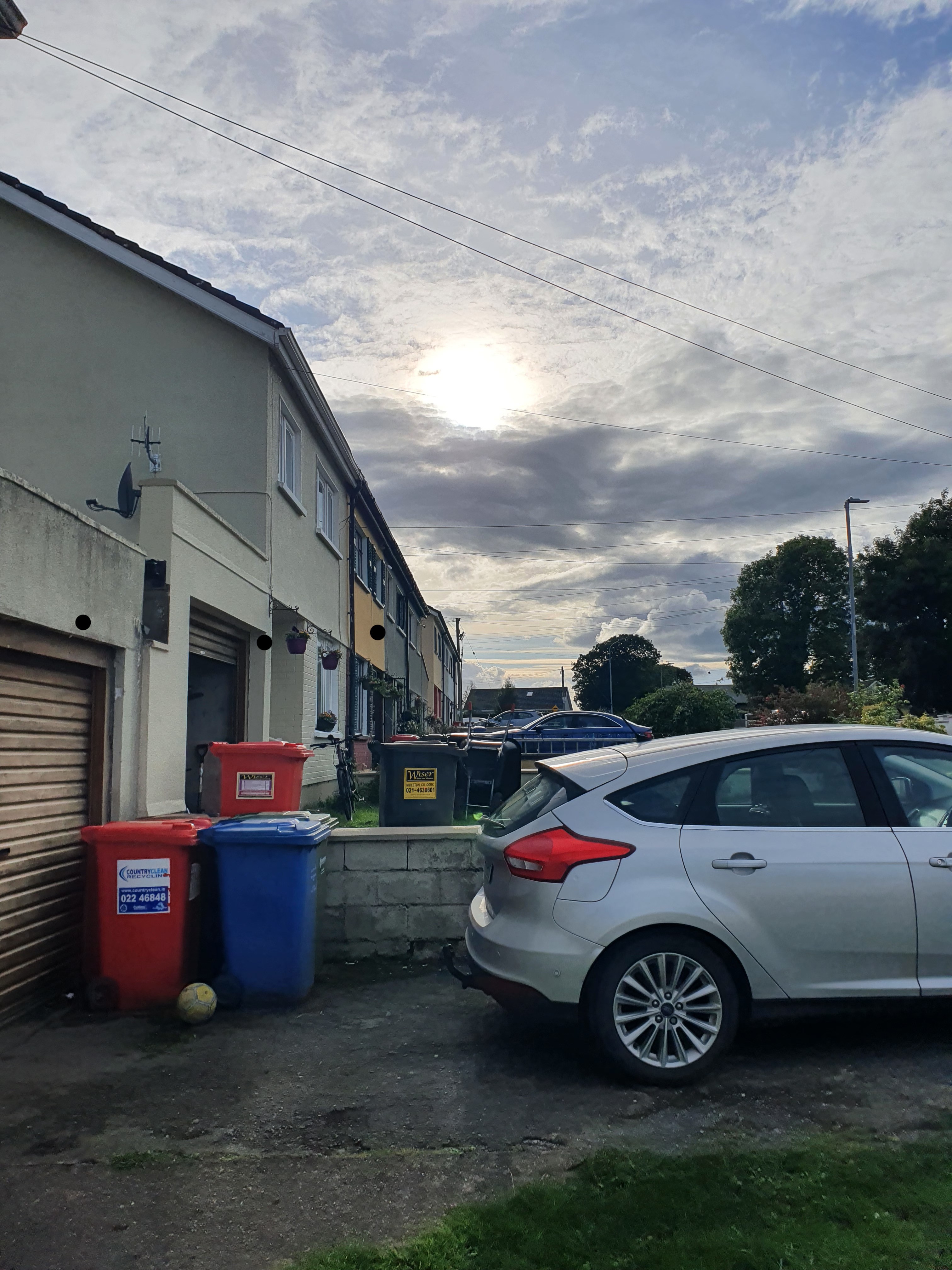
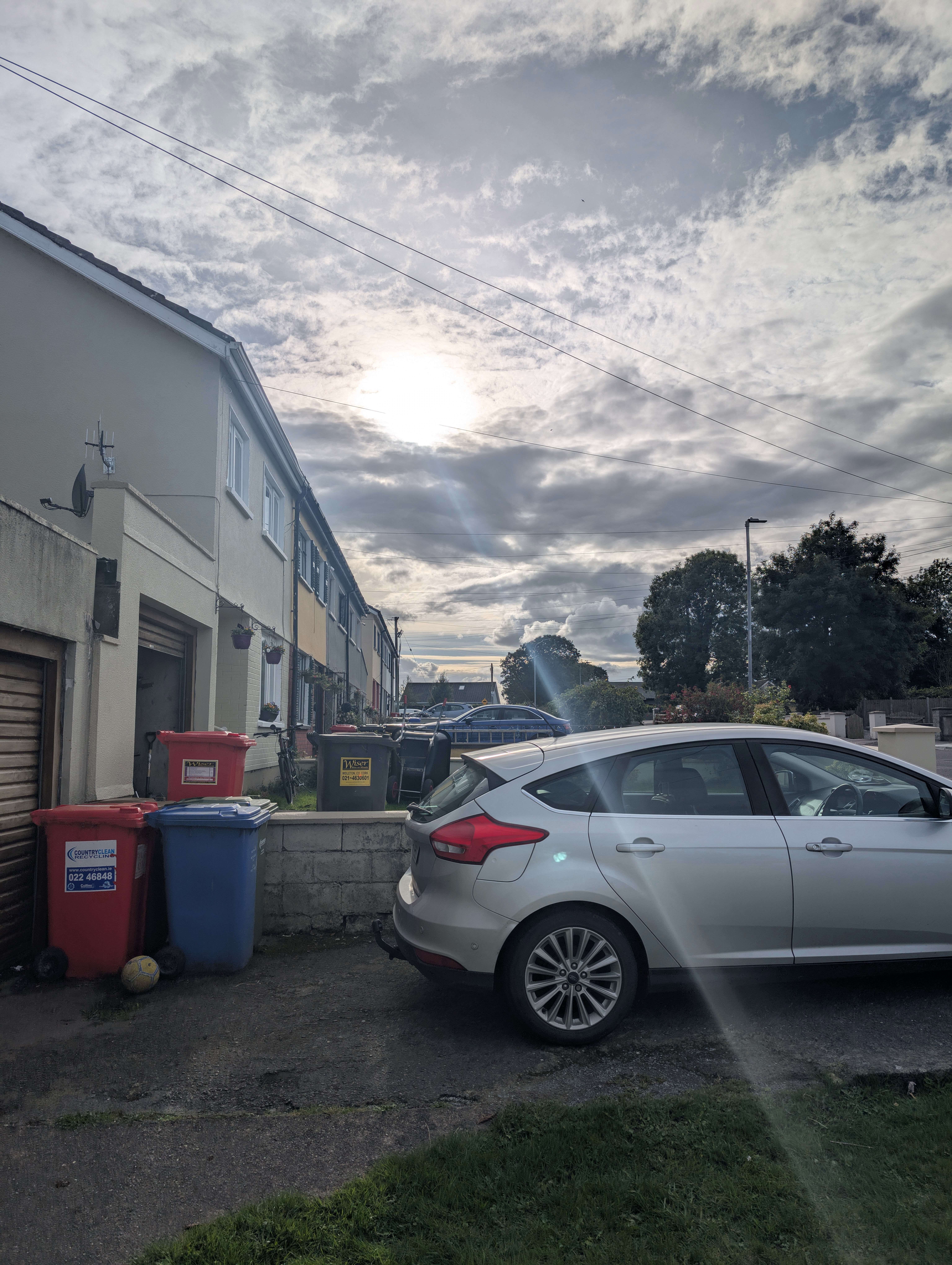
I suppose it’s not really a contest, at least for the main camera. The ultrawide on the back is also great, and for the selfie camera it’s not a contest: the Pixel 9 Pro wins hands down.
For the telephoto however, I’m more ambivalent. If I have a shot where the 5x zoom is handy e.g. taking a picture of horses at a distance as so to not spook them – it’s hands down better. However, for that use case, I’d rather prefer a 10x zoom if I’m honest. If I’m doing show-and-tell shots, the 5x zoom is too much, and I end up digitally zooming my main camera instead which is okay I suppose given its very high native resolution. That leaves the 5x telephoto in an odd position for me – I don’t think I’ll use it anything like as frequently as I did the telephoto on the S10. For me, for what I use cameras on the phone for, it doesn’t have a good trade off in my opinion. Taking it to 10x zoom or more would tick my box, and I suppose I can still digitally zoom that 48 MP image up to 10x. But if it were 10x optical zoom, I could digitally zoom in much further as in like a telescope, and that is genuinely very useful especially when you live rurally and do a lot of walking around in nature.
With those caveats and concerns listed, I’ll call the blindingly obvious. Result: Pixel 9 Pro win.
Fingerprint reader and buttons
Back when I got the S10, I found its below-screen ultrasonic fingerprint reader inferior to the physical button on the bezel below the HTC 10’s screen. Subsequent firmware releases have significantly improved the S10’s fingerprint reader, and it’s nearly as good as the Pixel 9 Pro’s, which is a little bit better again. I’d still take the physical button personally, but between just these two phones fingerprint based access is basically identical.
The S10 annoyingly put its volume buttons on the left side,
which ruined the use of any case which folds over from the
left as the volume buttons become useless. I therefore ended
up using a case without a front cover, and unsurprisingly I
then cracked the screen when I dropped a tool on it. The
Pixel 9 Pro puts ALL its buttons on the right side, so cases
with a left folding cover now just work. However, if I am
honest, the Pixel 9 puts those buttons in the wrong place –
the power button is way too low (I assume to not clash
with the camera module), and the volume buttons are exactly
half way down the side which means any clasp on the case
flap now covers those volume buttons. Which is so very
avoidable and annoying  .
.
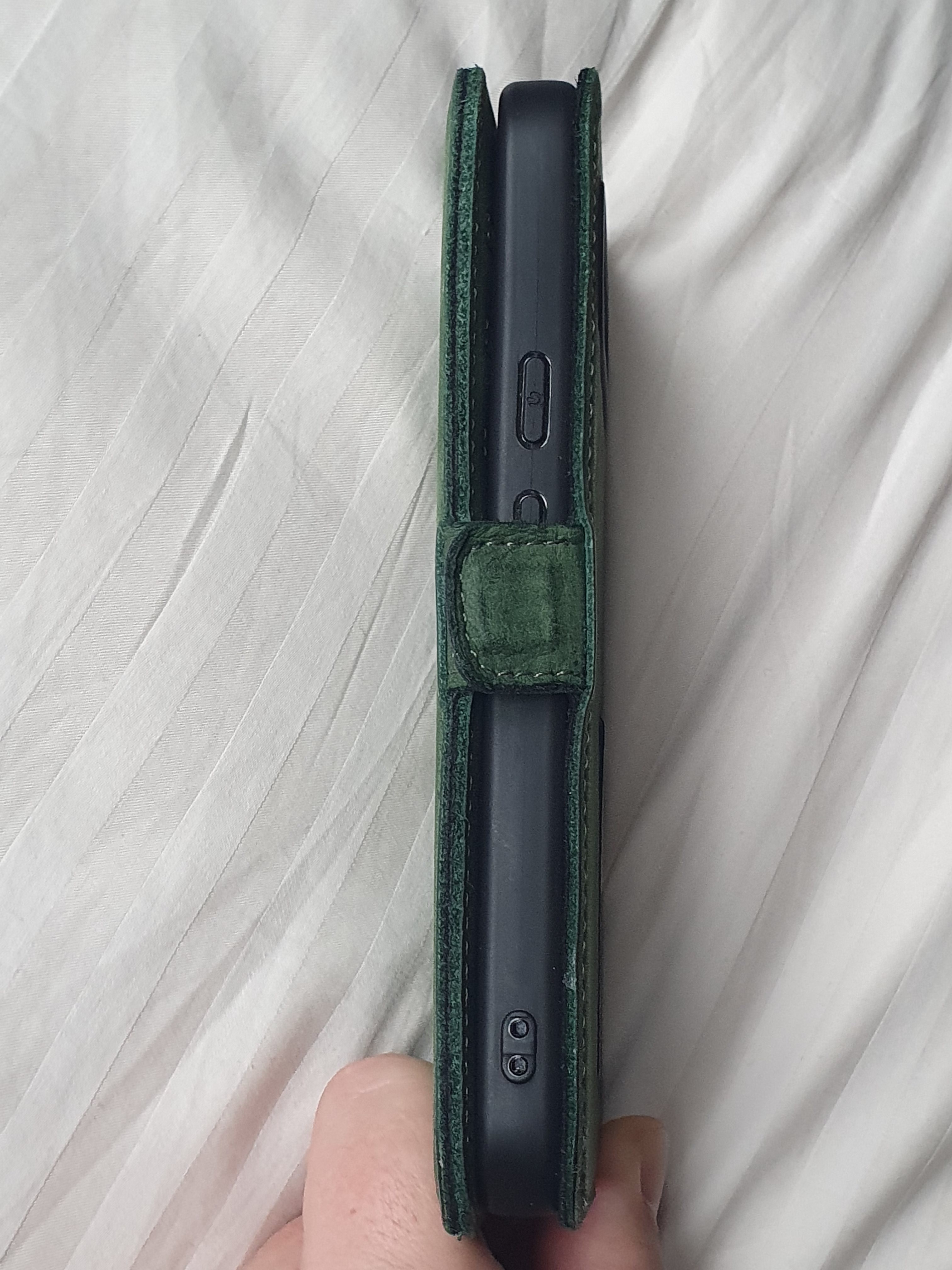
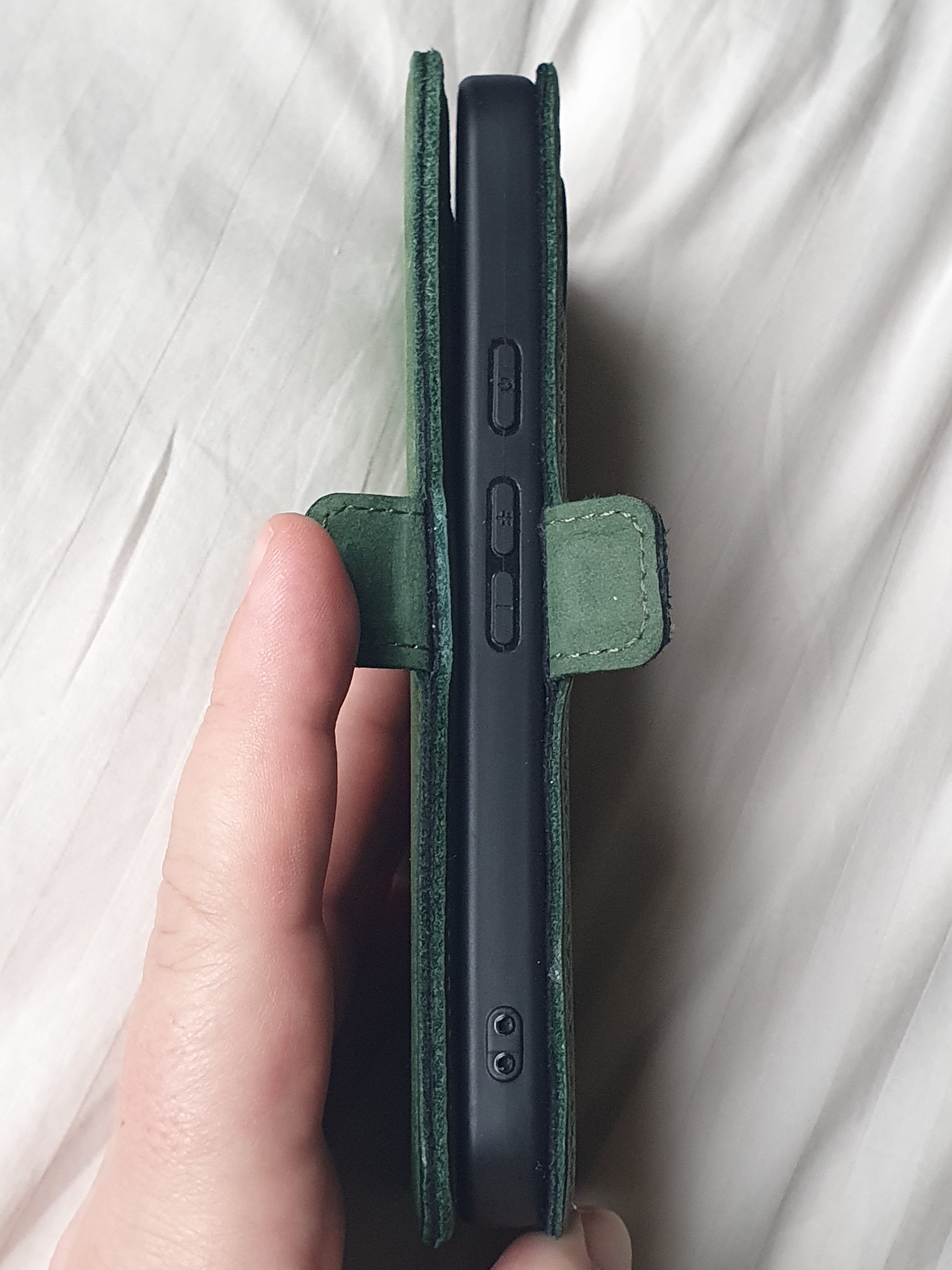
Both phones kinda suck on button placement, so result: Draw.
Handfeel
The Pixel 9 Pro is undoubtedly much heftier than the S10. It’s bigger, and much heavier, and that’s very noticeable in hand feel. There is another big difference: the Pixel is explicitly designed to always be used with a case so it has the cameras explicitly bulge out and make the phone top heavy:
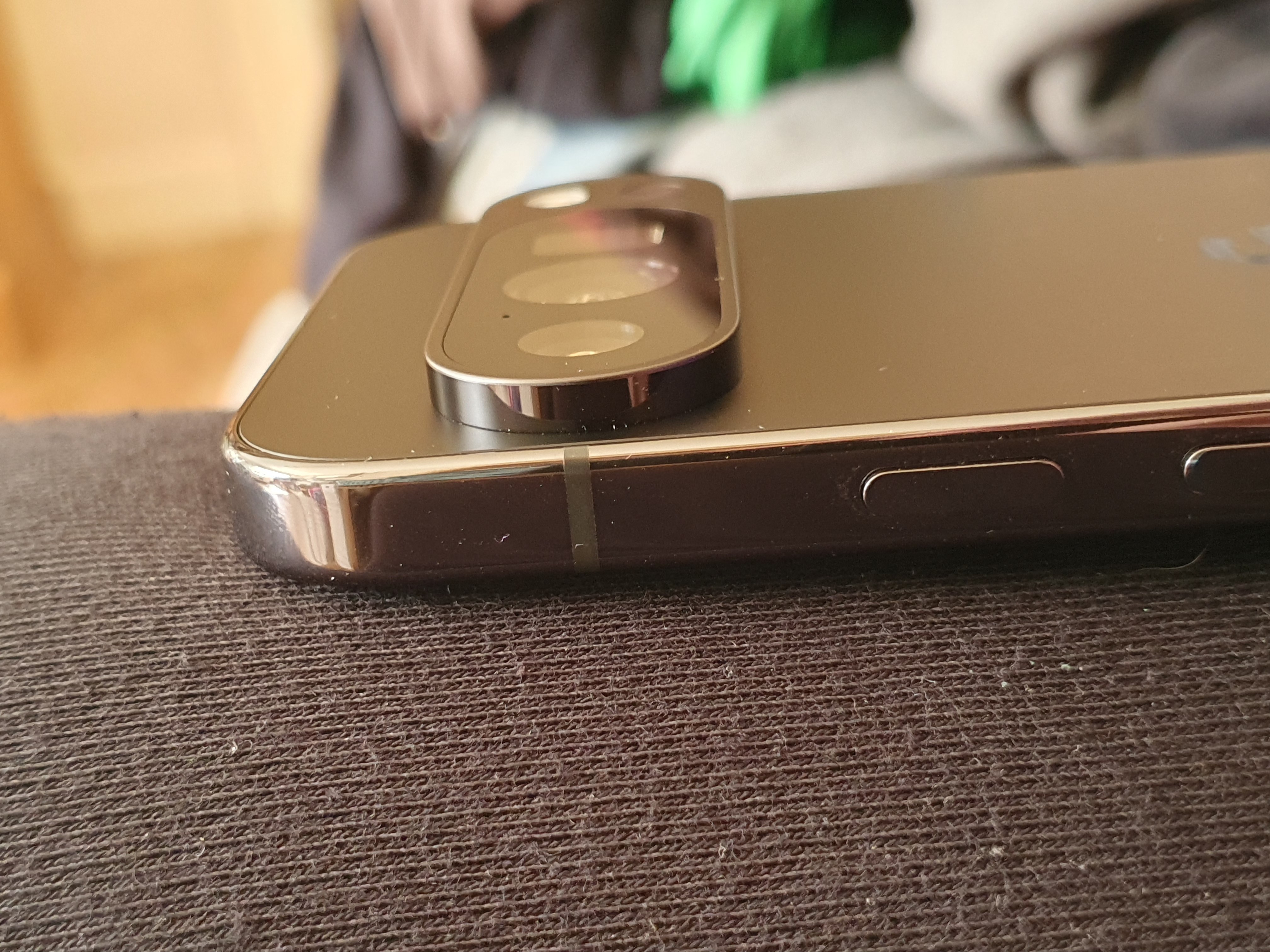
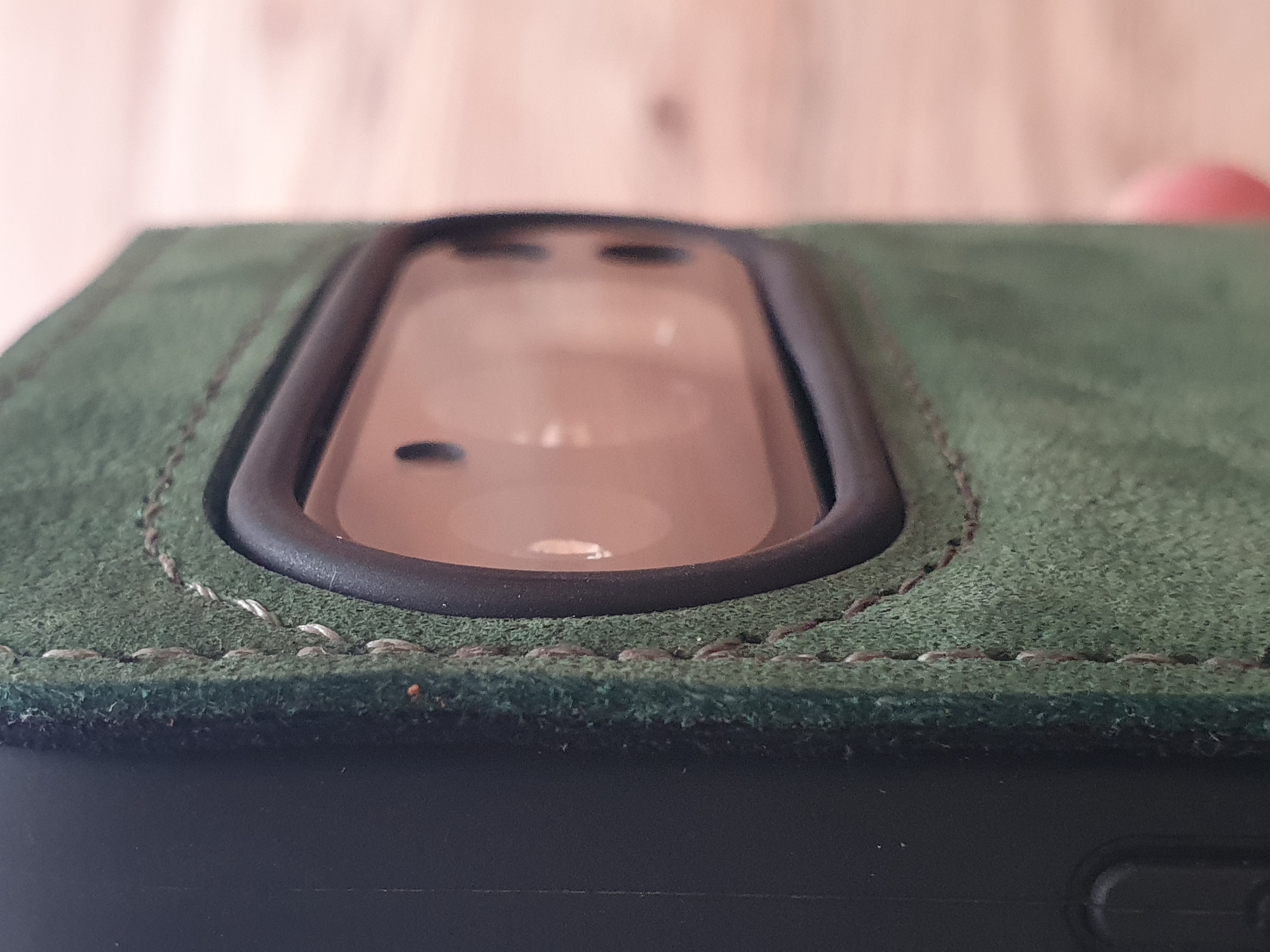
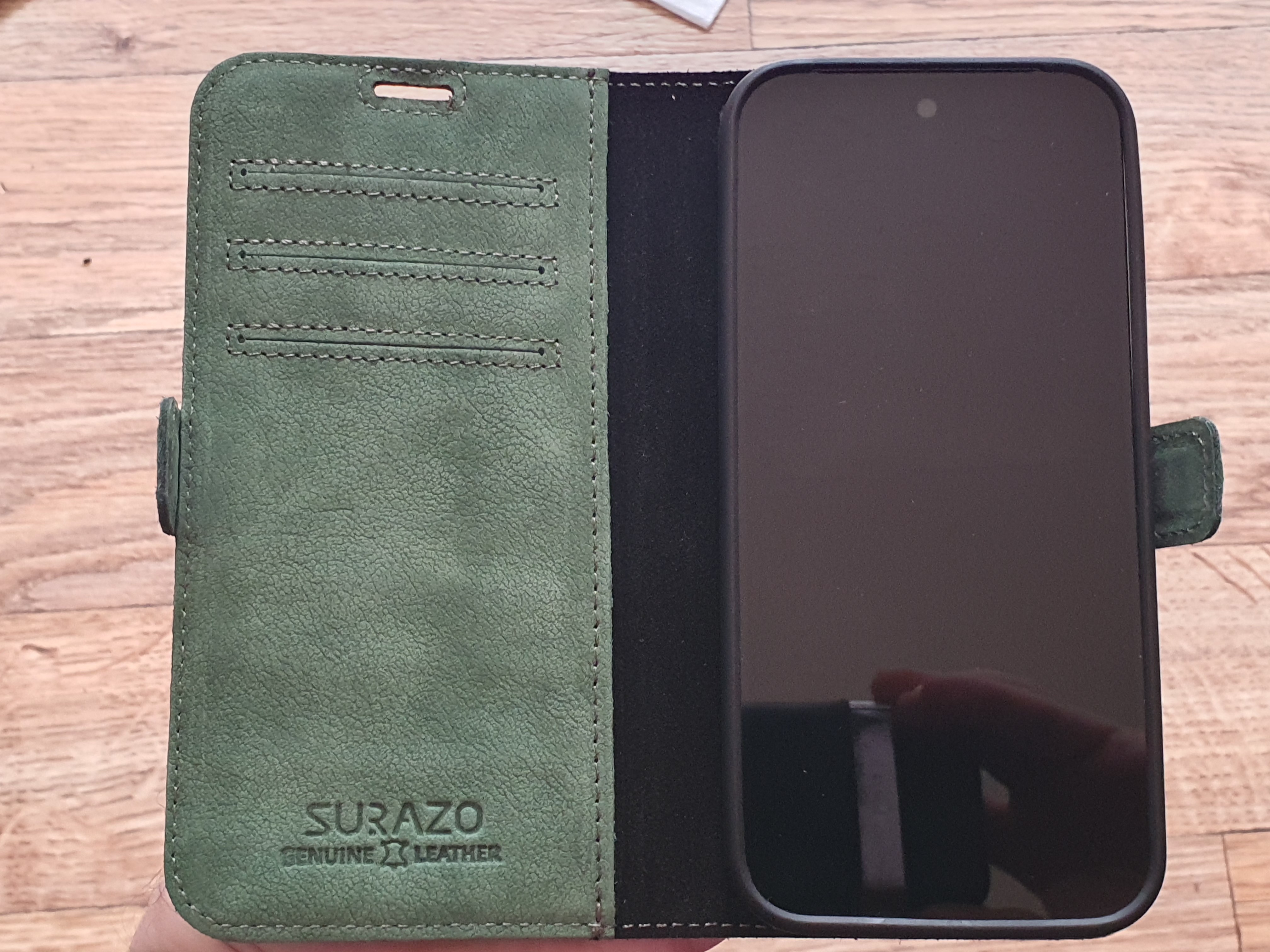
Once you then add the case, the Pixel 9 Pro becomes like a phone of years past: chunky, heavy, and noticeable in your pocket. It’s twice as thick as the S10 in its case, taller and wider, and weighs 321 grammes vs 217 grammes, so about 50% more weight.
Now for me personally I like a chunky heavy phone. I’ve said this on here a number of times going right back to the 2000s. The reason why is if I can feel it in my pocket, I notice when I’ve forgotten it, and there have been past phones which were so small and light I tended to misplace them frequently. I also think that the thinner the phone, the more likely it is to snap if in a back pocket when you bend down. I have few such qualms about the Pixel 9 Pro.
Given that I get back my cases with a folding front flap, and the overall improved durability, for me the result is: Pixel 9 Pro wins.
Summary:
S10 wins two; Pixel 9 Pro wins three; Draws were three. That’s surprisingly similar to the HTC 10 to Galaxy S10 comparison five years ago. Basically new phones of recent years are way better in maybe one thing, but on the rest they are similar or go slightly backwards. I guess that’s still progress, of a kind.
To be clear about this, I care more about the high gamut photo format than probably any other hardware related feature in the new phone, and that’s 100% software – the S10’s cameras were perfectly able to capture HDR if the software let them.
Where the biggest improvements for me with this upgrade will lie (apart from the improved battery life, obviously) will be mainly in being able to run GrapheneOS instead of a more traditional phone operating system. That I’ll write another post here about, either the next post or perhaps the post after the next post.
What’s next?
Apart from that post on GrapheneOS, there has been forward progress on the foundation design for my house. At the time of writing, I’ve seen a first draft of that foundation design, and I have already sent my architect a list of errata that I found with it. He’ll likely get onto that next week, so possibly by mid-October I’ll be able to do a show and tell post on those here.
As mentioned previously, we were thinking of ordering the EPS insulation for the outhouse at the same time as the house to save on delivery costs. Unfortunately my engineer felt they would need to insist on the outhouse design meeting the KORE agrément, and I felt that was massive overkill for a single storey single outer leaf EPDM covered roof outhouse which has far less loading on its concrete slab than a two storey double outer leaf slate covered roof building. I really want to build that outhouse for a minimum possible cost and effort, and if that means not meeting the KORE agrément, so be it. So I’ve refined the design somewhat since my post last May showing the proposed outhouse buildups, and I expect I’ll go with that when the time comes using loose sheets of KORE EPS from a building supplier. More expensive on the EPS yes, but less expensive on the concrete and reinforcing mesh, and definitely less hassle to build.
I’ll end this post with a few pictures taken using my Pixel 9 Pro along the nearby Analeentha greenway, and in Spain last week. I’m sure we’ll all agree they are very pretty:

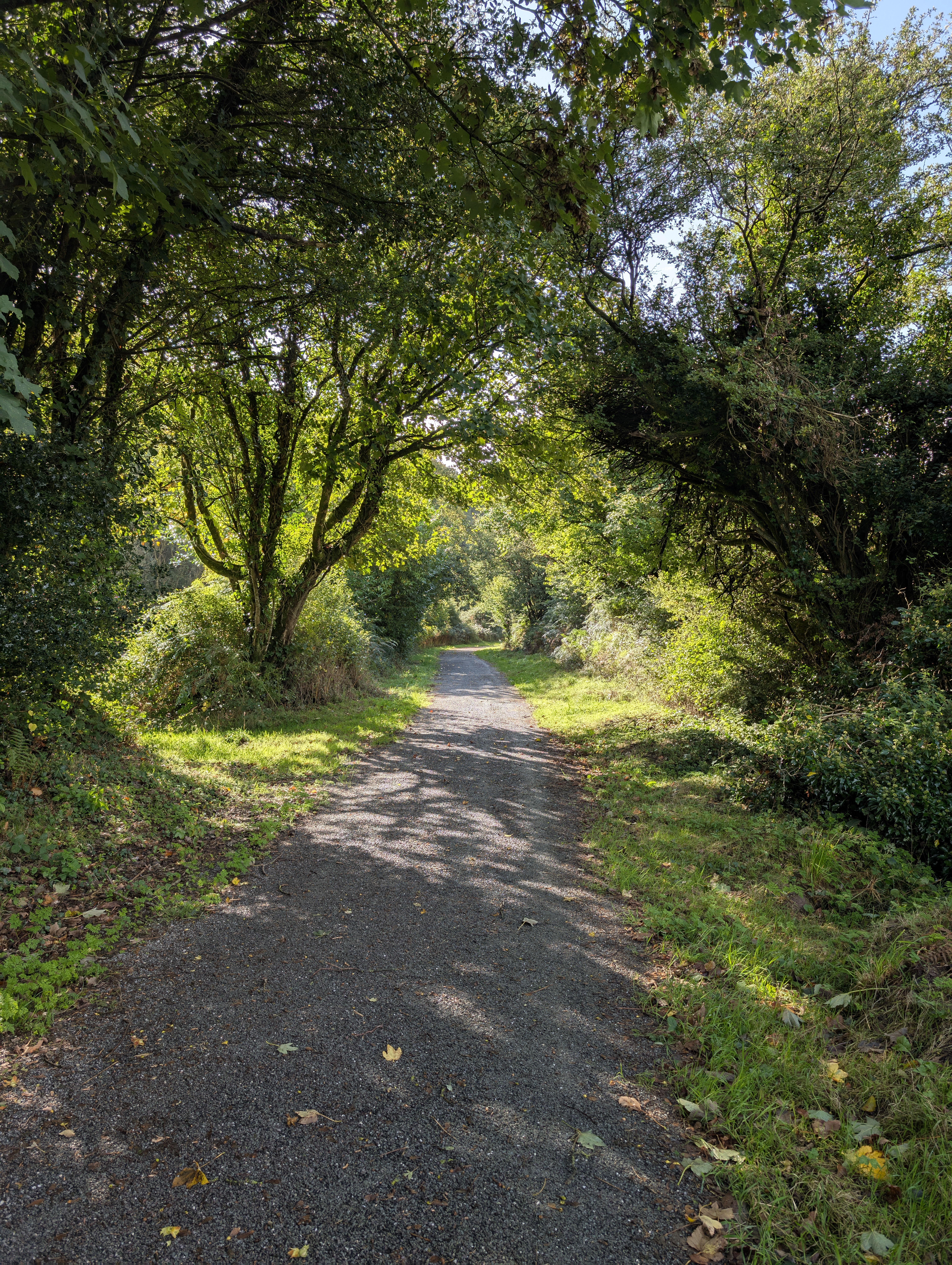

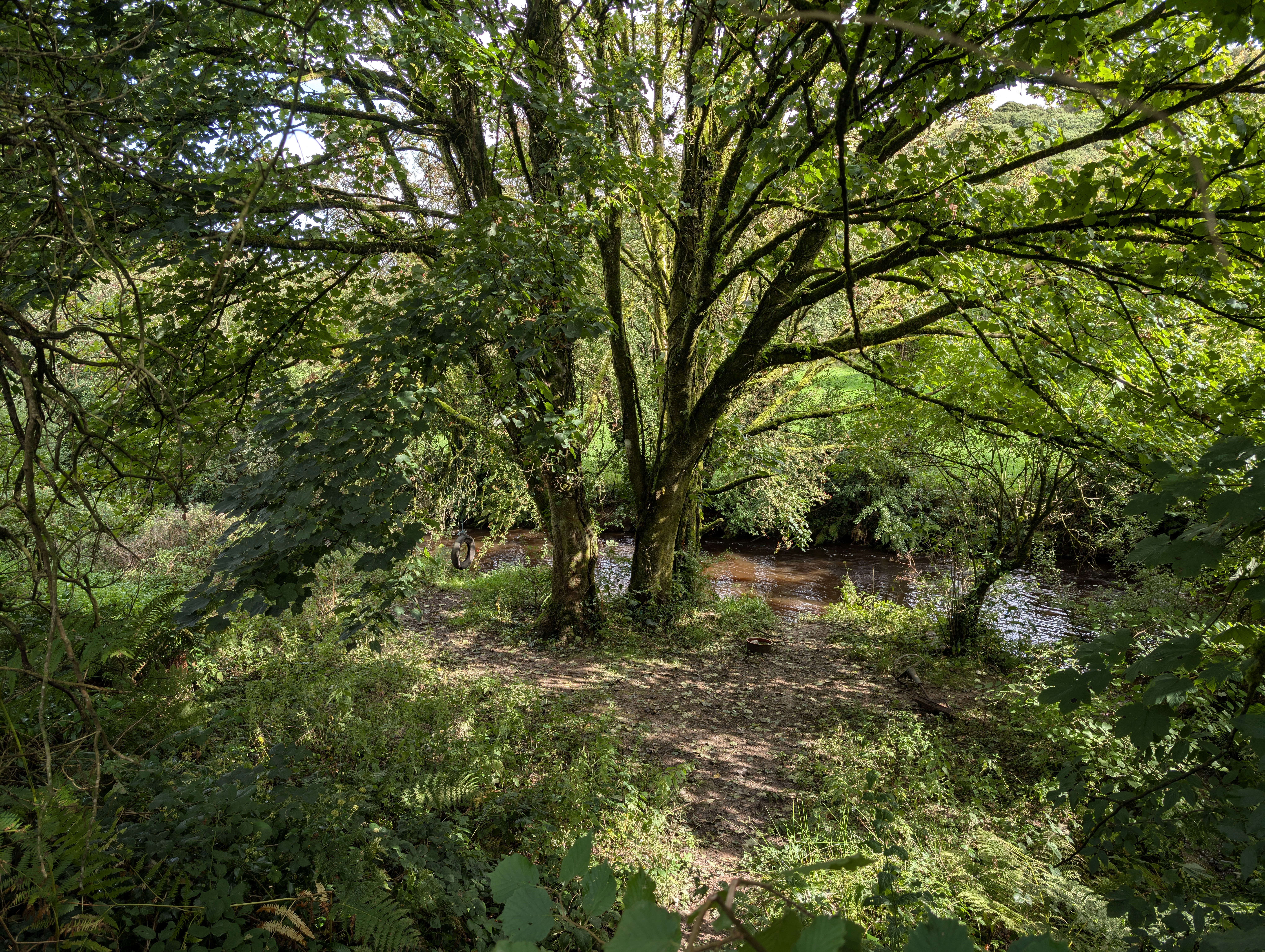
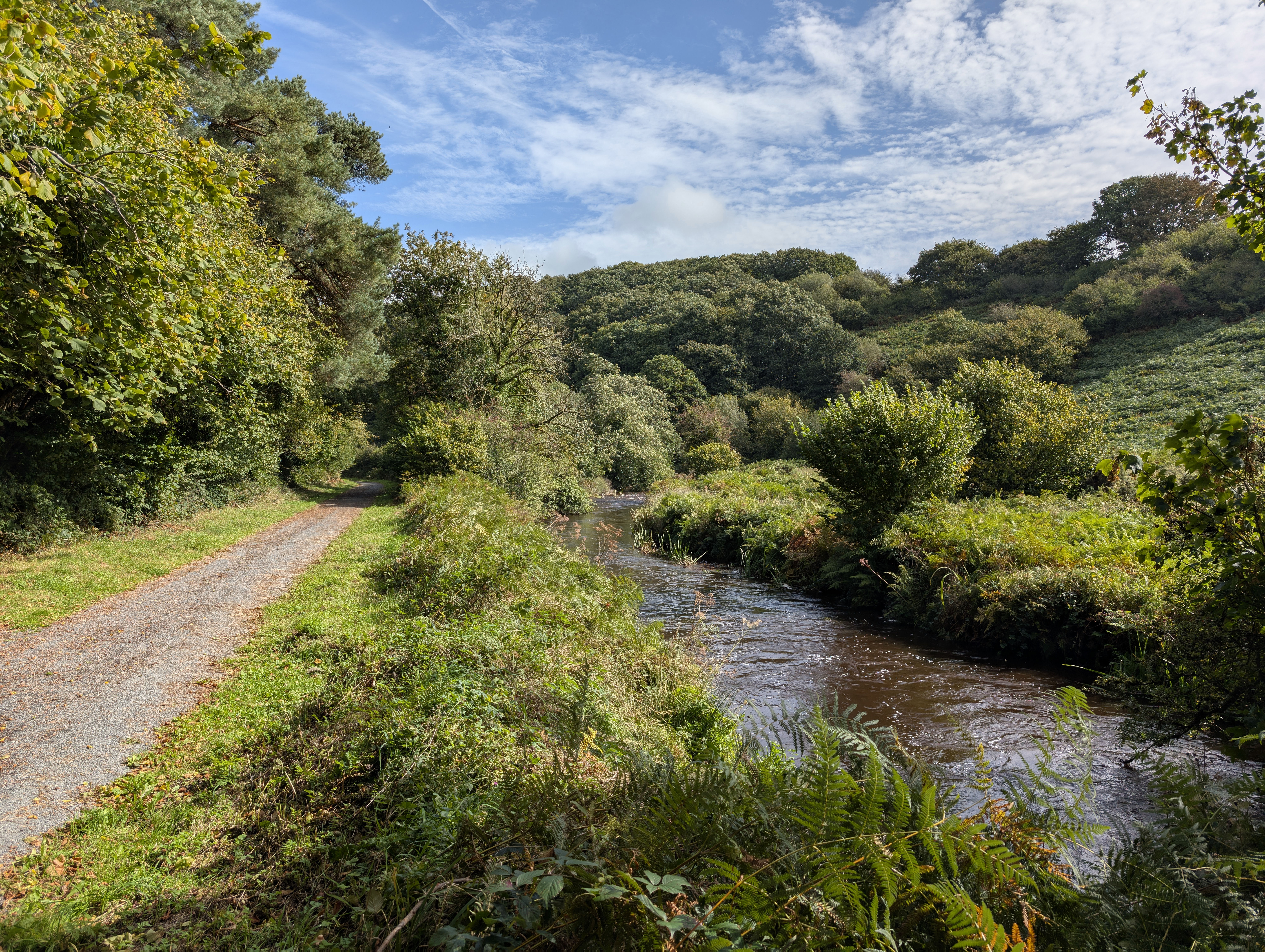

Here’s the entrance to the Analeentha greenway using the main camera and telephoto to demonstrate ‘tunnel’ effect the 5x zoom telephoto camera enables:
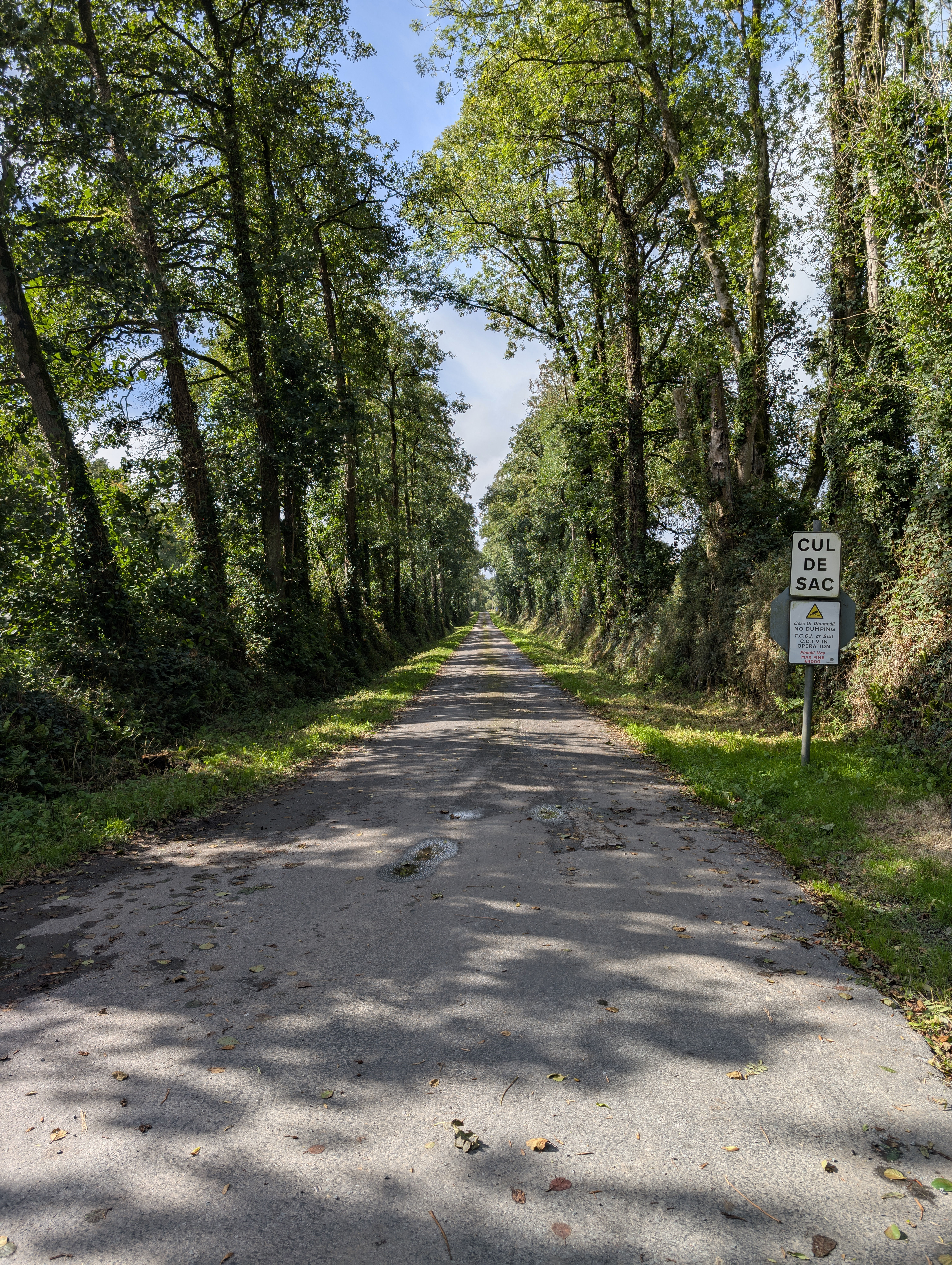
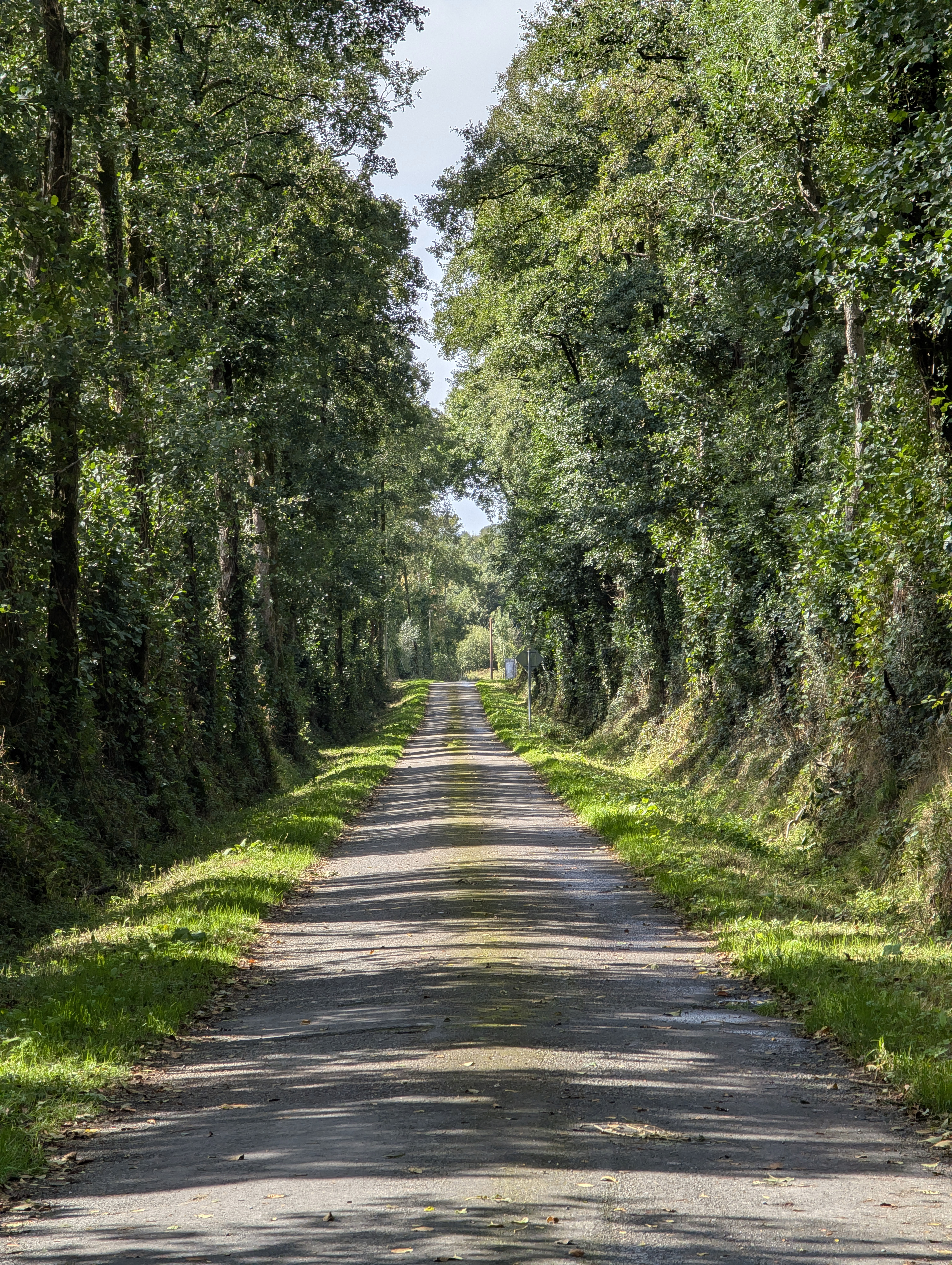
Here are the walls, cathedral and shrine to St. Teresa in Ávila, Spain:





And finally, last post I showed you the inside of my old watch. I’ve since had the time to disassemble it.
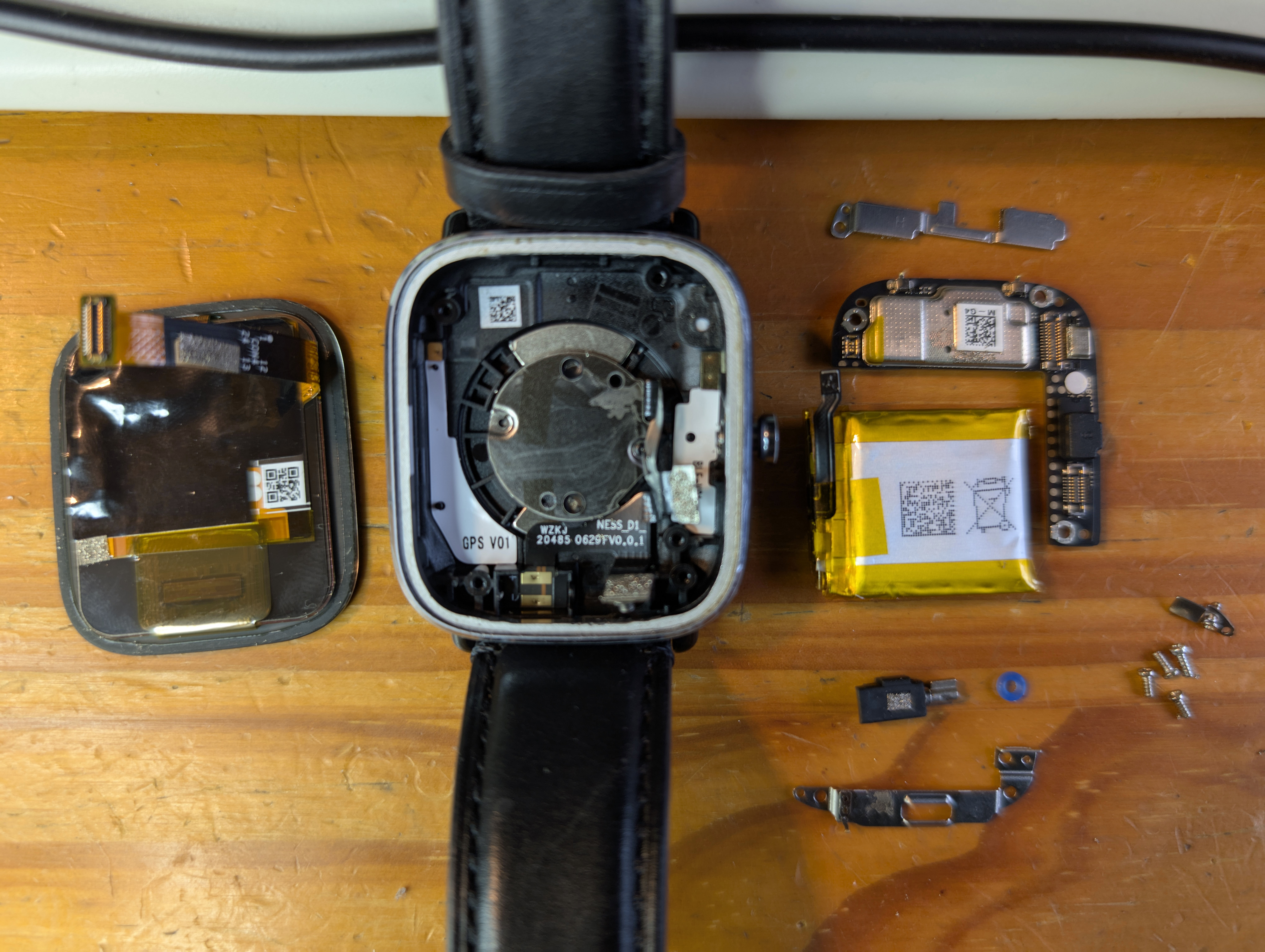
Kudos, as usual, to Chinese designers for making the electronics they design entirely screw assembled and therefore easy to completely break apart and reassemble. There was nothing surprising in there that I found, and I found it both very well assembled and manufactured. The barometric pressure sensor and vibrator motor are clear on the PCB and parts, everything else is under the double sided metal shrouded top of the PCB. I didn’t bother lifting that off, the CPU and chipset are all proprietary designs for this watch model anyway, so nothing to learn.
| Go to previous entry | Go to next entry | Go back to the archive index | Go back to the latest entries |